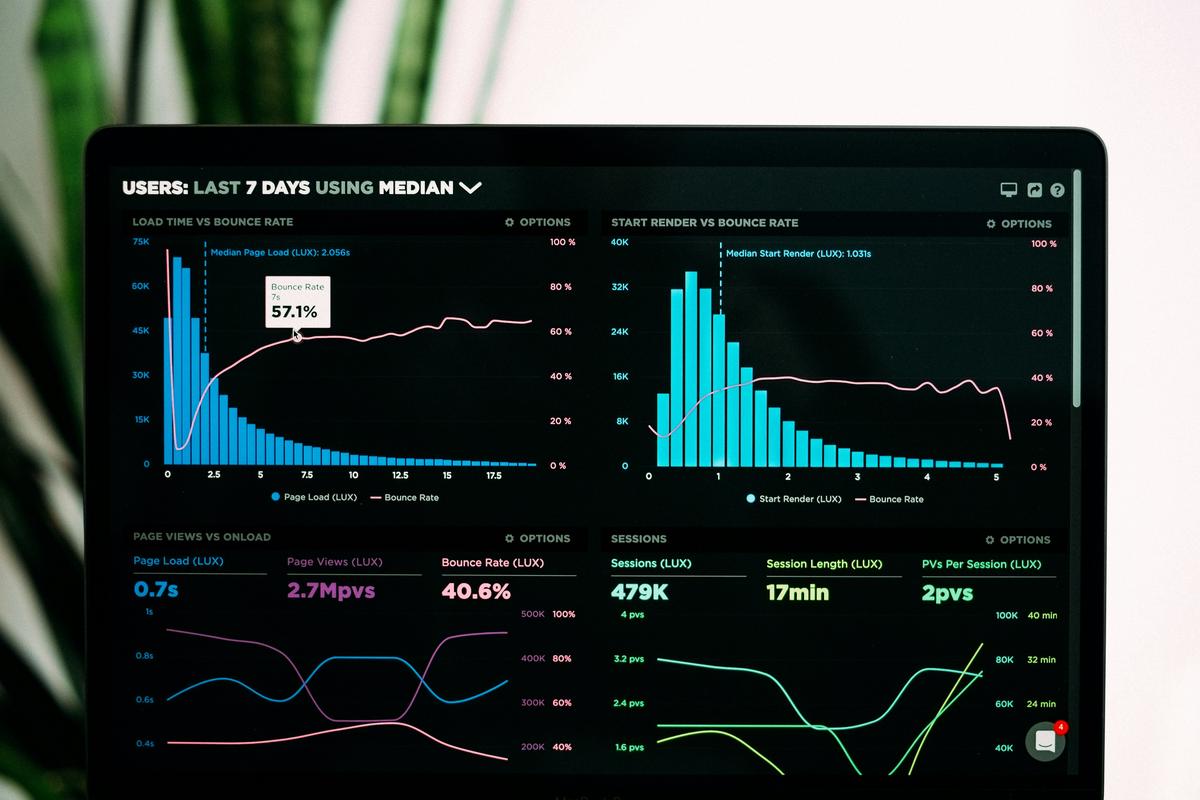Stepping into the digital realm, businesses today cannot afford to overlook the power of link building in determining their online success. This process, which centers around acquiring high-quality, relevant hyperlinks from other websites, serves as the lifeblood of search engine optimization (SEO) strategies, playing a vital role in how search engines rank web pages. Understanding the basics of link building, therefore, is crucial to navigate the complex online landscape effectively. Moreover, with the rapid evolution of SEO, it is equally important to stay abreast of the most innovative link-building strategies that can enhance visibility, drive significant traffic, and strengthen brand authority. However, the journey doesn’t end here. To ensure sustainable growth, businesses also need to comprehend the potential risks linked to these practices and devise solutions to mitigate them. Lastly, measuring the effectiveness of these link building tactics is key to continuously refining one’s approach and achieving desired outcomes.
Understanding the Basics of Link Building
Link Building: Propelling Your Digital Marketing Strategy to Extraordinary Heights
Enter the age of digital revolution – it’s here, it’s fierce, and it’s intricately wound within every conceivable industry. Your digital marketing strategy must not only be robust, but also agile and adaptable, harnessing the power of every tool and opportunity viable to stay ahead of the curve. Today, let’s navigate an often-overlooked, yet highly significant terrain – link building.
To the uninitiated, link building might sound like another complex, jargon-doused term. Far from it. Think of link building as creating bridges to your website, bringing in a targeted, organic audience, and boosting your digital presence. Here’s the rundown on link building and its power to pivot your digital marketing strategy to unprecedented success.
In the heart of Google’s search algorithm, links have an integral spot – serving as indications of a website’s quality. More authoritative links pointing towards your site result in a higher search ranking, increased traffic, and enhanced brand visibility. Essentially, it is a form of word-of-mouth for the digital world, where other websites vouch for your content. But note the keyword there – authoritative. The quality of these links matters more than one may initially perceive, far more than mere quantities.
For businesses of all sizes dreaming big in the digital realm, link building paves the way towards building relationships with influencers and industry leaders – growing a professional network on a scale simply unattainable offline. Building links mean, by essence, connecting. With influencers, authoritative websites, readers, audiences – it’s about building valuable connections that payoff, in more ways than one may assume.
And it doesn’t stop there. Link building is the skeleton key to building your brand’s authority and credibility in cyberspace, cementing your position as a titan in your industry. In other words, if your links are hosted by known, trusted sources, Google acknowledges your website as trustworthy – a precursor to the infamous E-A-T (Expertise, Authoritativeness, Trustworthiness) framework.
An innovative link-building strategy is also synonymous with keeping up with industry trends and customer needs. To create quality links, you must produce relevant, cutting-edge content that aligns with audience expectations and interests. It’s a cyclical process, where creating quality, engaging content leads to higher linkability, driving traffic, ROI, and brand authority simultaneously.
Integrating smart link building into your digital marketing strategy unquestionably amplifies ROI and cultivates an enviable brand image. Ultimately, it’s about strategizing, innovating, envisioning the bigger picture, and having the acumen to connect the dots. Harness the power of link building today, and watch your business transform into a digital marketing powerhouse.

Innovative Link Building Strategies
Link Building Strategies That Drive Innovation and Digital Presence
Leveraging the power of link building goes far beyond the conventional approach. This digital dais requires one to delve deep into the art of creativity and innovation. Continuous research, out-of-the-box tactics, and deep understanding of the business landscape, industry trends, customer behavior, digital marketing, search engine behavior, and more is essential to innovative link building.
Uncharted Territories: Exploring Innovative Link-Building Strategies
Powerful link-building strategies today have surpassed traditional guest posts and directory submissions. Several innovative approaches can be leveraged to gain quality backlinks and magnify your digital presence.
- Skyscraper Approach: This technique involves identifying the best performing content within your industry and creating content that surpasses it in quality, depth, and value. Sharing this superior content with relevant influencers and sites often leads to high-quality backlinks.
- Harness Social Media: The role of social media platforms in driving website traffic cannot be underestimated. Regular engagements and shares on channels like LinkedIn, Facebook, or Twitter can excel at asserting credibility while building high-quality backlinks.
- Podcast Guesting: Podcasts have taken the digital world by storm. Featuring as a guest in industry-relevant podcasts can allow you to tap into the host’s audience, thereby boosting referral traffic and building valuable backlinks.
- Organize Webinars: Offering valuable insights and information through webinars can establish a thought-leadership position in your industry. Promoting your webinar on different platforms can garner backlinks and enhance digital presence.
- Influencer Outreach: Influencers command vast audiences that can potentially turn into website traffic. Collaborating with influencers via blogs, interviews, or social media engagements can result in a surge in backlinks.
- Link Reclamation: This approach involves reclaiming lost backlinks or requesting backlinks from mentions that have not linked back to your site. A polite, friendly outreach can patch up those lost links and reinforce your link-building approach.
- Repurpose content: Different people have different content preferences – some prefer video, others prefer text, infographics, or podcasts. Repurposing your content in different formats for different platforms can bring in backlinks from diverse sources.
PIONEERING Link-Building Trends: Staying Ahead of The Curve
Innovative link-building strategies require one to keep an eye on the future, exploring new tactics with potential. The use of AI in SEO, leveraging emerging platforms like Clubhouse, crafting VR and AR experiences, developing voice search optimized content, or the use of schema markups are promising future avenues to strategize link-building.
The business landscape is dynamic and calls for a continual evolution. The courage to experiment, the wisdom to adopt what works, and the resilience to learn from what doesn’t builds the path to a robust link-building strategy.
Link-building, at its core, embodies a symbiotic relationship that brings together mutual benefits. It’s not just about constructing a network of backlinks but about weaving a vibrant tapestry of relationships, expertise, credibility, and authority in digital space. So, let’s revolutionize the game and build a resounding digital presence that echoes in the echelons of internet domains.

Link Building Risks and Solutions
As promising as the process of link building appears, it also holds its fair share of potential threats which should not be disregarded. One of the primary risks involved is the prospect of accumulating low-quality or spammy links, largely stemming from dubious sources. These can significantly harm search engine rankings, and by extension, damage brand reputation. Moreover, quick fix link-building strategies such as buying backlinks may seem alluring, but these are notorious for being flagged by search engine algorithms, potentially leading to penalties or even removal from search results.
It’s imperative to make an effective assessment of every potential link partner. High-quality links ideally come from credible, relevant sources with high domain authority. By meticulously analyzing website metrics, credibility, and relevance to the brand, one can avert the risk of damaging links.
Making vast strides in link building tactics, some business entities may exploit private blog networks (PBNs). While these may provide short term gains, Google’s algorithms have grown proficient in identifying PBNs, rendering them risky for long-term SEO strategies.
The key to addressing this issue lies in adopting organic link building methods. Creating high-quality content that sector-relevant influencers and domains find valuable enough to link to can be a sustainable, long-term strategy. Akin to business revolutions, persistence, patience, and quality content creation can lead to organic link growth, effectively minimizing the risk of penalties.
Another prevalent risk emanates from ignoring link building’s contextually relevant aspect. Even from reputable domains, links that lack contextual relevance can still induce harm. The significance of contextual relevance in link building is inexorable. Therefore, focusing on acquiring links from industry-relevant sources, engaging in collaborations pertinent to business, and creating resonating content can alleviate this potential setback.
As an effective measure, constant monitoring and managing of backlink profile is a fundamental aspect of addressing risks. Employing robust SEO tools for regular audits can detect potential threats, harmful links, or penalties, enabling early intervention, rectification, or disavowal of harmful links.
Lastly, the risk of over-reliance on link building needs to be addressed. While indeed an essential tool for SEO, its significance shouldn’t overshadow other elements of a comprehensive digital marketing strategy. Using a shrewd mix of on-page optimization, technical SEO, and social media marketing can yield long-term benefits.
Perfecting the art of link building isn’t about rushing to the finish line and implementing quick fixes. Rather, it’s about establishing a balance between assertive risk-taking and savvy innovation. It’s about building an empire premised on value for potential link partners and audiences alike. In the ever-changing landscape of digital marketing, pioneers who navigate rough seas—facing challenges head-on, and innovating consistently—are those who ultimately conquer the digital kingdom. With an eye on prevalent trends, attention to every detail, and a relentless pursuit of excellence, businesses can effectively turn potential link building risks into profitable assets, creating a firm digital stronghold.

Evaluating the Success of Link Building
To successfully measure the fruitfulness of your link-building efforts, there are several key metrics one should be focusing on. Understanding that these are not isolated indicators but operate in a symbiosis allows a holistic overview of progress.
To immediately gauge the effectiveness of your link-building strategies, one major parameter is organic traffic or natural instances of visitors being directed to your site from non-paid search engine results. A surge in organic traffic can be a significant sign that your link-building endeavors are successfully contributing to your SEO. Google Analytics is a free and powerful tool for tracking such trends.
Next, look out for an uptick in the number of unique referring domains, via tools such as SEMRush or Moz. A diverse pool of authoritative sites linking to your webpage improves search engine ratings and contributes to your website’s authority.
While assessing your link-building strategies’ success, it’s crucial to monitor improvements in search rankings. Track whether your target keywords are climbing the SERP (Search Engine Results Pages). Tools like Ahrefs, SEMrush, or Google’s own Search Console can aid you in pinpointing these metrics, allowing for better perception of your SEO and link-building strategy.
Unlike backlinks from blog posts or articles, backlinks from niche-specific influential platforms carry an additional metric that should be measured – the referral traffic. These are the visitors who follow the links from these platforms to your site. High referral traffic indicates a healthy link profile and also helps identify where the most engaged audiences are located.
Though often overlooked, social media shares are another noteworthy metric to measure. A high number of social media shares not only signifies that your content resonates with your audience but also enhances your visibility on search engines, indirectly boosting your efforts.
Additionally, it is vital to track conversions resulting from link building. Whether the conversion goal is lead generation, online transactions, or newsletter subscriptions, understanding how link-building efforts directly lead to conversions helps evaluate the ROI and fosters a more efficient, conversion-focused link-building strategy.
Furthermore, domain and page authority ranks helped developed by SEO platforms like Moz can assist in understanding how search engines are likely to perceive your site’s credibility. A noticeable increase in these ranks indicates successful link-building.
Finally, observe if there’s a growth in brand mentions across the web. Various social listening tools like Mention or BuzzSumo can help track these. Naturally, more brand mentions mean higher brand visibility, credibility, and trust – all correlating with successful link building.
Remember, link building is not a standalone process but a cog in the wheel of your digital marketing strategy. While these metrics are significant in measuring link-building success, they should be complemented with other components such as quality content, technical SEO, and an engaging user experience to substantially increase search engine favorability.
Moreover, the constant flux in search engine algorithms underscores the fact that link building, like any other marketing strategy, should be adaptive and change-embracing. So, keep measuring, learning, and refining to stay ahead in the digital revolution.

Photo by lukechesser on Unsplash
From the basics of link building, through innovative strategies, to the evaluation of success and risks mitigation, it is clear that this aspect of SEO demands not just technical knowledge but a deep understanding of the dynamics of web behaviors and audiences. Engaging in such a multifaceted practice requires patience, innovation, and a constant willingness to adapt to changing digital landscapes. But when performed accurately and responsibly, link building can unlock endless opportunities for online growth, brand recognition, and business sustainability. Therefore, it’s not just about building any links; it’s about building the right links. Remember, the ultimate goal should be to provide value to your audience, and if you consistently prioritize this goal in your link-building efforts, considerable online success is likely to follow.






